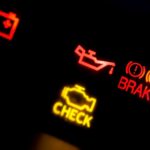
Volkswagen Golf Trouble Code B10E7F0: What It Means & How We Fix It

- Understanding the Trouble Code B10E7F0 in the Volkswagen Golf
- What the Code Means
- Why We Care (Because It’s More Than Just a Code)
- Which Golf Models Are Most Affected
- Common Symptoms You’ll See (And Feel)
- What Causes the B10E7F0 Code?
- Diagnostic Steps – How We Tackle This
- Repair Costs and Time Estimates
- DIY vs. Professional – What Can We Handle at Home?
- Preventive Measures & Good Habits
- When to Ignore It (And When Not To)
- Real-World Examples (What Others Have Seen)
- Common Mistakes to Avoid
- Quick Troubleshooting Checklist
- What It Feels Like Driving With the Fault
- When Replacement Is the Right Decision
- After the Fix – What We Do to Double-Check
- Final Thoughts Before You Tackle It
- In Summary
Understanding the Trouble Code B10E7F0 in the Volkswagen Golf
When the code B10E7F0 pops up on your diagnostic scan tool for a Volkswagen Golf (commonly MK7/MQB platform), it can feel like the car is speaking in tongues. We’ve been there — staring at a dashboard of blinking warnings, trying to figure out what the heck the car is trying to tell us. Let’s break it down together.
What the Code Means
- B10E7F0 translates to: “Cruise Control Front Distance Range Sensor separated”.
- In simpler terms: the front radar or distance-sensor element used by the Adaptive Cruise Control (ACC) or Front Assist system has lost connection, or the system believes it is not receiving data from that sensor.
- It often appears as part of a larger bundle of errors where ACC / Front Assist becomes unavailable.
So, imagine your car is driving down the road, and the “eyes” ahead that watch for cars or distance have gone blind—or at least temporarily disconnected. That’s what this code is signalling.
Why We Care (Because It’s More Than Just a Code)
Why should we jump on this code and not ignore it? Good question. Here are reasons:
- The ACC/front-assist system is a safety and convenience feature — when it fails, you lose functionality like automatic distance control, possible emergency braking, etc.
- Even if the car drives “fine”, this fault may indicate wiring or sensor issues that could worsen over time (intermittent faults are sneaky).
- It may hide behind it a deeper electrical or module communication issue — treating symptom only may mean the root cause remains.
Which Golf Models Are Most Affected
While this code may appear in multiple platforms, it’s especially common in the MK7 (2013-2020) Golf and its derivatives (GTI, R, Alltrack) that use the ACC/Front Assist radar module. In many forum posts, MG7 owners report the code.
Common Symptoms You’ll See (And Feel)
When the code B10E7F0 triggers, you might notice:
- “ACC not available” message on dashboard.
- “Front Assist unavailable” warning.
- Possibly ABS/ESC or other stability-system warnings because the car’s networks are interlinked.
- Intermittent loss of distance sensor function – maybe the radar works sometimes, sometimes not.
- No obvious driving fault apart from the warnings — tricky because the car may feel normal.
What Causes the B10E7F0 Code?
Let’s act like detectives. What are the usual suspects?
Wiring / Connection Problems
- A loose connector at the front radar sensor module (often behind grille)
- Damaged wiring harness, pin corrosion, moisture ingress
- Poor ground or intermittent electric supply
Sensor Module Failure
- The radar/distance sensor itself may be faulty or drifting out of spec
- Internal fault in module which records “separated” signal
Communication & Module Issues
- The ACC/Front Assist control unit (e.g., J428) may have lost connection to radar module.
- Databus or CAN-network faults creating false sensor-separated codes
Environmental or Physical Blockage
- Dirt, leaves, or ice covering the radar window
- Off-road damage or alignment shifts of radar sensor
Low Battery / Voltage Issues
- Intermittent faults sometimes root in low system voltage which causes modules to mis-communicate. While not always primary for this code, many forum users note coincident electrical oddities.
Diagnostic Steps – How We Tackle This
Let’s roll up our sleeves and walk through how we’d diagnose this code on a Golf.
Step 1 – Read & Clear the Faults
- Use scan tool / diagnostic interface (like OBD11 or VCDS) to read all stored codes and freeze-frame data.
- Clear them and see if B10E7F0 returns. If it stays gone – nice, but still monitor. If it comes back, we’re onto something.
Step 2 – Visual Inspection of Radar Module & Wiring
- Locate the front distance radar sensor (behind grill or bumper) on MK7 Golf.
- Check for:
- Loose or disconnected connector
- Bent/broken pins
- Moisture ingress or corrosion
- Blockage of radar window (dirt/grime/ice)
- Straightforward but often resolves simple cases.
Step 3 – Measure Wiring & Power Supply
- Using a multimeter, check that the sensor module is receiving proper voltage and ground.
- Wiggle test harness while observing signals. If fault appears when harness moves — wiring is culprit.
- Check for CAN communication lines (resistance, short to ground, etc).
Step 4 – Sensor Module Test or Replacement
- If wiring is good but the code persists, the module itself may be at fault.
- Before replacing: check for firmware updates, known recalls or TSBs for your model year.
- Replacement can be costly — sometimes re-programming is required.
Step 5 – Module Coding and Calibration
- After module replacement (or if sensor moved), avalanche of recalibrations may be needed:
- Radar alignment/calibration
- ACC system coding
- Re-initialization of “Front Assist” in vehicle settings
- Clear faults, retest.
Repair Costs and Time Estimates
Let’s talk money and time — always a bit of a wild card, but we’ll go broad.
- Simple fix: cleaning or reconnecting sensor, labour maybe 0.5-1 hour. Low cost.
- Wiring repair: depends on harness location, could be 1-3 hours labour + parts.
- Sensor module replacement: depending on part cost (which may run hundreds of dollars/pounds) + calibration, could be a significant bill.
- Calibration might require dealer-level tools, adding cost/time.
- Because we’re dealing with safety/driver-assist systems, it’s not a 10-minute plug-and-play for novices in many cases.
DIY vs. Professional – What Can We Handle at Home?
We like getting our hands dirty, but also know our limits. Here’s how we split the responsibilities:
| Task | Suitable for DIY? | Consider Professional? |
|---|---|---|
| Visual inspection of sensor & connector | ✅ Yes if you’re comfortable under bumper/grill | — |
| Clearing debris or cleaning sensor window | ✅ Very DIY-friendly | — |
| Checking wiring continuity & supply voltage | ✅ If you have multimeter & wiring knowledge | Professional recommended if wiring inside bumper/fascia |
| Sensor module replacement + calibration | 🚫 High risk DIY | ✅ Pro strongly recommended |
| Module coding, advanced diagnostics | 🚫 Better left to pro | ✅ Definitely pro |
We always say: if you’re comfortable with basics and have proper tools, ride the DIY path. But when it comes to driver-assist safety systems, if anything looks beyond your comfort zone — call the pro.
Preventive Measures & Good Habits
Since we’ve been through this, we might as well prevent the next one. Here are good practices:
You may be interested in reading Volkswagen Golf Trouble Code 01314: The Complete Guide to Understanding and Fixing It
Volkswagen Golf Trouble Code 01314: The Complete Guide to Understanding and Fixing It- Keep the radar window clean — just like your windshield wipers. Dirt or ice can fool the system.
- Check connectors after any front-bumper work. Many times this code arises after a minor collision or repair.
- Maintain battery health. A strong, stable voltage is the silent ally of all electronics.
- Regularly scan your vehicle’s electronic modules for pending faults — don’t wait until lights flash.
- If you live in harsh climate (snow/ice), ensure radar is not frozen/blocked.
When to Ignore It (And When Not To)
Yes, we said not to ignore it — but context matters.
If you’re seeing only B10E7F0 with no other symptoms
- Maybe a one-off glitch. Clear the code, drive for a few days. If it stays away, good.
If the fault comes back, or multiples appear
- Don’t ignore. It may evolve into loss of ACC or Front Assist or knock-on effect on safety systems.
If safety systems are impacted
- That’s a red flag. Loss of ACC, Front Assist or other driver aids = professional diagnosis.
Real-World Examples (What Others Have Seen)
Here are some snippets from fellow enthusiasts:
“The first error code I receive is B10E7F0 which is related to the ACC sensors.”
“I have a Golf MK7 GT 2013. My front ACC sensor has stopped working… and B10E7F0 appears.”
And one user on their forum:
“Hmmm… being intermittent it’s very problematic… I suspect a wiring issue more than the sensor itself.”
So yes — the community leans toward wiring/intermittent issues — but the sensor module still makes the short list.
Common Mistakes to Avoid
Let’s avoid the potholes we’ve seen others fall into.
- Replacing the sensor module without checking wiring/connectors first — high cost, may not fix it.
- Ignoring the message “ACC not available” because “my car still drives fine”. Sure, but the assist features may be gone.
- Skipping calibration after module replacement — leads to strange behaviour or further codes.
- Clearing the code and thinking the job is done. Without driving the vehicle and verifying, you’re just delaying the problem.
Quick Troubleshooting Checklist
Here’s a bullet-list we can refer to when that code appears:
- Connect scan tool, record the code and freeze-frame data
- Clear code, drive for a few days — does it return?
- Inspect radar sensor window for dirt/ice
- Check connector: firmly seated, no corrosion, no bent pins
- Check wiring harness for damage, continuity, voltage supply
- If wiring is good, consider sensor module replacement & calibration
- After repair: clear codes, test under real traffic conditions, verify ACC/Front Assist is back online
Simple, but often the checklist weeds out 70-80% of the issues.
What It Feels Like Driving With the Fault
When the front distance sensor is “separated”, your car is a bit like a soccer goalie who’s removed their gloves. You still have feet, you still dive—but you’re not as effective. So when driving:
- The ACC feature might simply not engage.
- The Front Assist may warn you or not work.
- The car might get a “false sense” of safety and behave erratically in assist mode.
- Because so many modules are interconnected (ABS, ESC, radar), you might see weird patterns or multiple modules reporting faults one after another.
It can feel like your car’s electronic brain is saying “I’m fine… well, sorta fine… don’t look too closely.”
You may be interested in reading Volkswagen Golf Trouble Code 01314: The Complete Guide to Understanding and Fixing It
Volkswagen Golf Trouble Code 01314: The Complete Guide to Understanding and Fixing It Volkswagen Polo Engine Light: Meaning, Causes, and Complete Troubleshooting Guide
Volkswagen Polo Engine Light: Meaning, Causes, and Complete Troubleshooting GuideWhen Replacement Is the Right Decision
Here are scenarios where we’d say: yes, sensor/module replacement is likely the correct path.
- Wiring checks show sensor is getting correct power & ground, but data lines show no communication.
- The connector/harness has been verified, cleaned, repaired — and fault still returns.
- The module has known failure history/design-weakness for your model year.
- Calibration has been attempted post replacement of other components but still fails.
In that case, replacement gives you peace of mind and restores full system functionality.
After the Fix – What We Do to Double-Check
We’re not lazy — we want to make sure the fix really took hold. After repair:
- Clear all faults and re-scan the system.
- Take the car for a drive in mixed conditions (open road + traffic) to engage ACC/Front Assist.
- Monitor for re-appearance of B10E7F0 or related codes (U112300, etc).
- Make sure no “ACC not available” or “Front Assist unavailable” messages show.
- Document the repair and code clear for future reference.
Final Thoughts Before You Tackle It
We know it can be tempting to say: “Ah, it’s just a warning, I’ll ignore it.” But with modern cars like the Golf, warnings about driver-assist systems should not be dismissed lightly. The front-distance sensor is like the car’s front-facing radar senses — when those go, you lose more than just a gadget.
Take the time now, use the checklist, determine whether you’re dealing with a simple fix or a deeper issue, and fact-back your repair with diagnostic data. In the long run, you’ll drive with more confidence.
In Summary
The trouble code B10E7F0 for the Volkswagen Golf means the front distance-range sensor (used by ACC/Front Assist) is “separated”. While it can stem from a basic connection error, more complex wiring or module faults are common. A systematic diagnostic approach (scan-check-clean-measure-repair-calibrate) is your best friend. Don’t ignore it — get it sorted, and your car will thank you by being safer and more reliable.
FAQs
Q1: Can I reset the code B10E7F0 and just ignore it?
A: You can clear it, but if the underlying problem remains, the code will most likely come back. It’s best to diagnose and repair rather than simply reset.
Q2: How much does replacing the radar/distance sensor cost on a Golf?
A: It varies by region, part cost and labour, but expect anything from a few hundred dollars (for bolt-on sensor) to higher if calibration and module programming is required.
Q3: Does the code B10E7F0 always mean the sensor is bad?
A: No — often the issue is wiring, connector, corrosion or communication fault. Sensor replacement is only recommended after wiring has been verified.
Q4: Is it safe to drive if ACC/Front Assist is unavailable due to this code?
A: While the car may still drive fine, you’ll be without some driver-assist safety features. Drive with extra caution until you fix the fault.
Q5: After replacing the sensor or module, do I need to calibrate anything?
A: Yes. Calibration and proper coding are crucial. Without them you may still get faults or the system may not function correctly.
 Volkswagen Golf Trouble Code 01314: The Complete Guide to Understanding and Fixing It
Volkswagen Golf Trouble Code 01314: The Complete Guide to Understanding and Fixing It Volkswagen Polo Engine Light: Meaning, Causes, and Complete Troubleshooting Guide
Volkswagen Polo Engine Light: Meaning, Causes, and Complete Troubleshooting Guide Common Volkswagen Polo Problems and Their Warning Signs (2025 Detailed Guide)
Common Volkswagen Polo Problems and Their Warning Signs (2025 Detailed Guide)If you want to know other articles similar to Volkswagen Golf Trouble Code B10E7F0: What It Means & How We Fix It you can visit the category Common Problems.
Deja una respuesta






More content of your interest